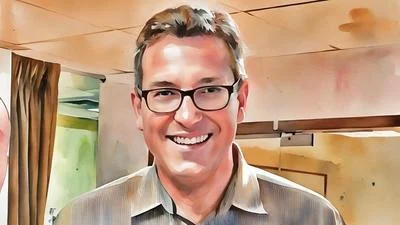Pamela Chu is an expert in chemical kinetics. In other words, she studies the rate at which chemical reactions happen. Now, she is leading a new initiative at NIST that aims to speed up certain chemical reactions. By a lot.
NIST’s carbon capture initiative is working on new technologies for removing carbon dioxide, or CO2, from the atmosphere. CO2 emissions are the main cause of climate change, and scientists warn that if they don’t fall rapidly, global average temperatures will rise more than 1.5 degrees Celsius above preindustrial levels, and the risks from climate change will increase dramatically.
Emissions reductions alone may not be enough to avoid that threshold. But carbon capture, which can be thought of as producing negative emissions, might help bring net emissions down more quickly. In this interview, which has been edited and condensed, Pamela Chu explains why she thinks carbon capture is important and what NIST is doing to speed up the chemical reactions — and the innovations — that might make carbon capture a viable technology that can help slow down climate change.
NIST’s carbon capture initiative focuses on “direct air capture,” which involves pulling CO2 out of the atmosphere. Why is direct air capture important?
Direct air capture is important because it won’t be possible to eliminate CO2 emissions entirely. Even if we decarbonize most of the economy — if we all start using electric vehicles and power the grid with renewable energy and so on — there will still be industries where some emissions can’t be avoided. Air travel is one example. It’s very hard to fly planes on anything other than liquid fuels. Agriculture is also a big source of emissions. Cows belch methane, which is a powerful greenhouse gas, and you can’t just put a dome over every cow to capture those emissions. So, if we are still going to have emissions in the positive column, we need something in the negative column to balance those out. That’s where direct air capture can play an important role.
Another way to think about it is that direct air capture is a way to undo some of the damage we’ve done. We’ve pumped so much CO2 into the atmosphere that the concentration today is about 50% higher than in preindustrial times. But still, the amount of CO2 is small in absolute terms, about 0.04%. That makes direct air capture very challenging, from a technical point of view.
How is NIST helping to solve those technical challenges?
This is a huge challenge, and solving it will take an “all hands on deck” approach across industry and government. NIST plays a critical role because we are the world’s leading experts in measurement science, and accurate measurement is key when it comes to developing new technologies and transforming large systems like the global energy economy.
Let me give you an example. Manufacturing cement releases a lot of CO2. Some companies are developing new manufacturing methods that capture CO2 inside the cement, rather than releasing it. That can make a major dent in global emissions just because of the huge amount of concrete that gets poured every year. But how do you know how much CO2 these new manufacturing methods actually capture? That’s a hard thing to measure. At NIST, we’re developing transparent, reliable measurement methods that can be standardized. That creates a level playing field so that companies can compete in the marketplace based on verifiable claims about their products, and that helps industries innovate and grow.
We also have a strong focus on advanced materials that can soak up CO2 from the air. We are trying to understand the underlying physics and chemistry of those materials so scientists can better predict which ones will work best and under what conditions. We are developing computational models that help other scientists simulate how these advanced materials interact with CO2 and other gases in the atmosphere. And we are also developing measurement methods so you can verify that the models work.
How did you get involved in this type of work?
My background is chemical kinetics, which is about understanding how chemical reactions work. How fast do they go? How can you speed them up or slow them down? How can you optimize them? These are important questions when it comes to direct air capture. We know how to pull CO2 out of the air. But it’s expensive using current technology. If we can improve the technology and the science as we go, hopefully that will reduce costs so that these technologies can scale up in an economically viable way.
You said before that pulling CO2 out of the air is very challenging from a technical point of view. Are you optimistic that technology can solve this problem?
I am hopeful because a lot of people from across different industries and scientific disciplines are working on this. Though we do have to find solutions quickly. Time is of the essence. Also, it’s important to remember that no one approach is going to solve this problem. Direct air capture is just one technology in a portfolio of technologies that people will bring to bear on the climate issue. Other people are working to reduce emissions, or regrow forests, or transform agriculture. There are a lot of different approaches, and I am optimistic that if we put all these things together, we can slow down climate change and give society time to adapt.
Original source can be found here.








